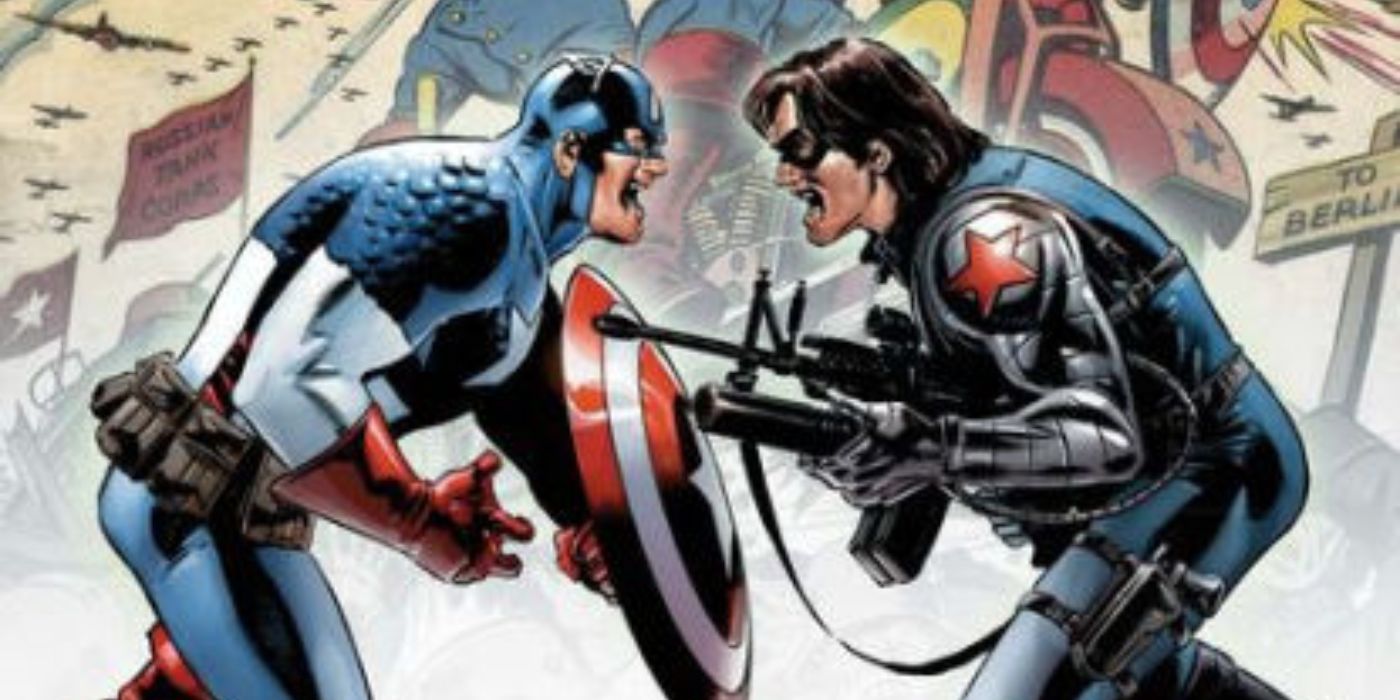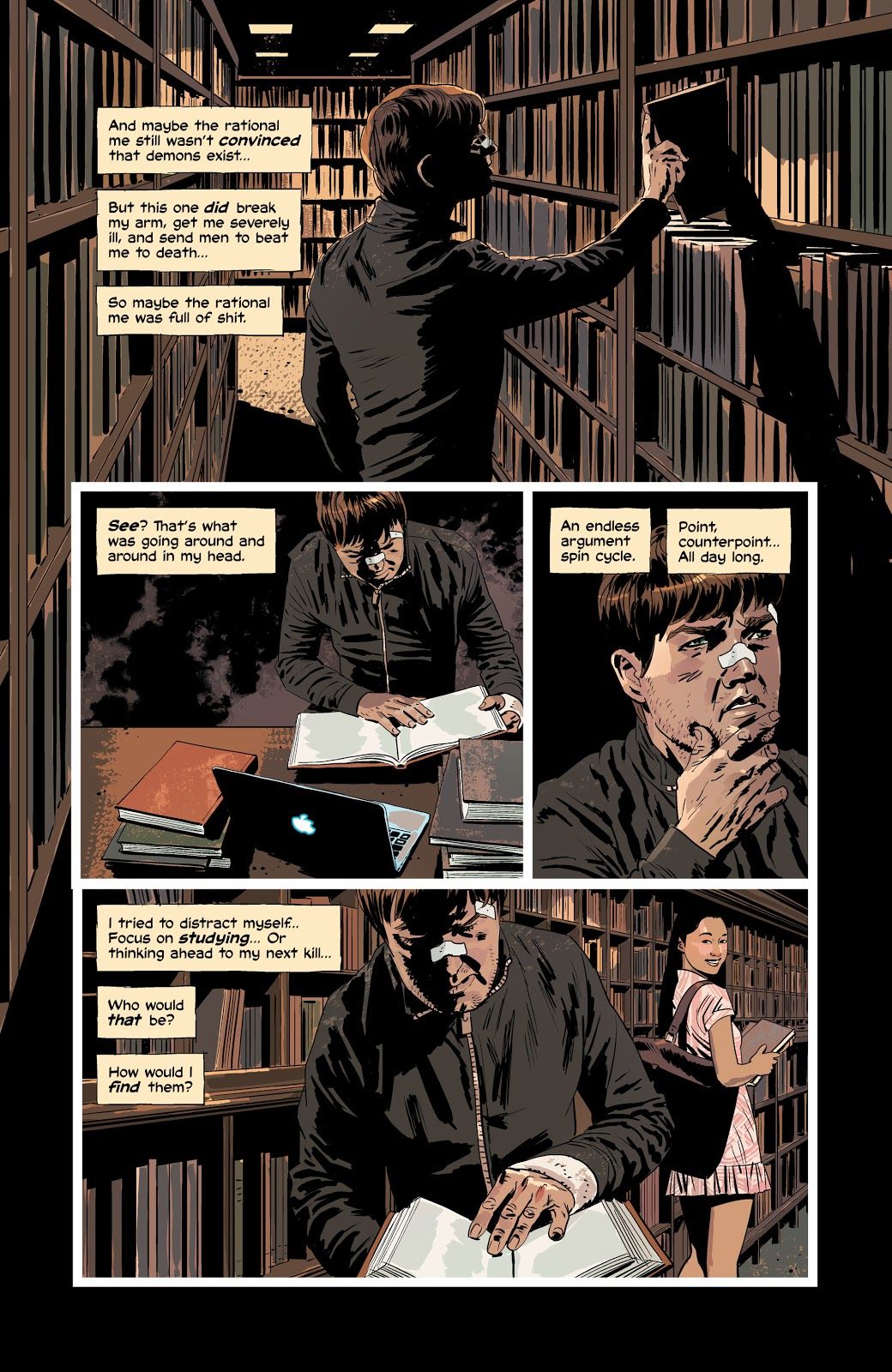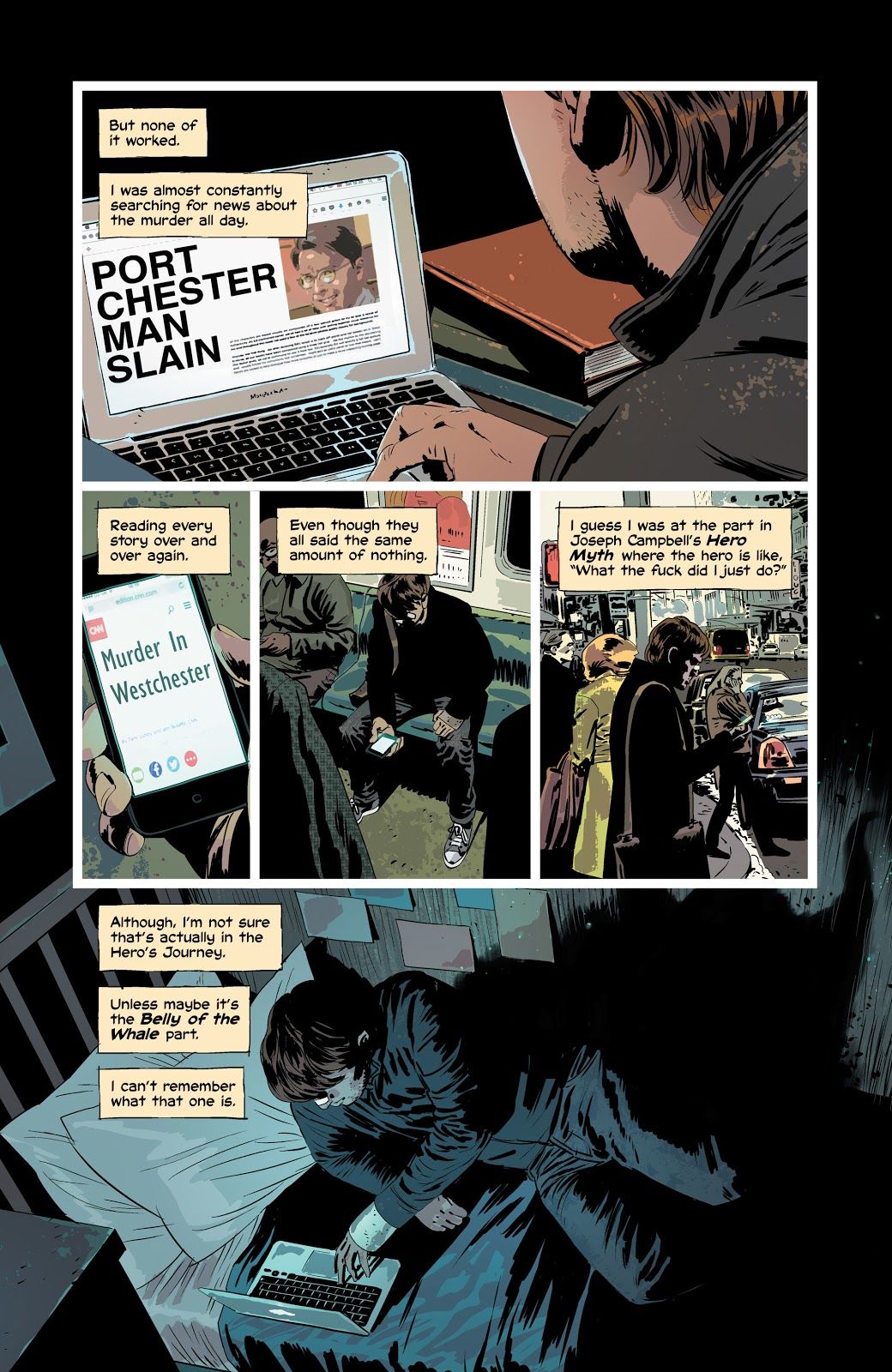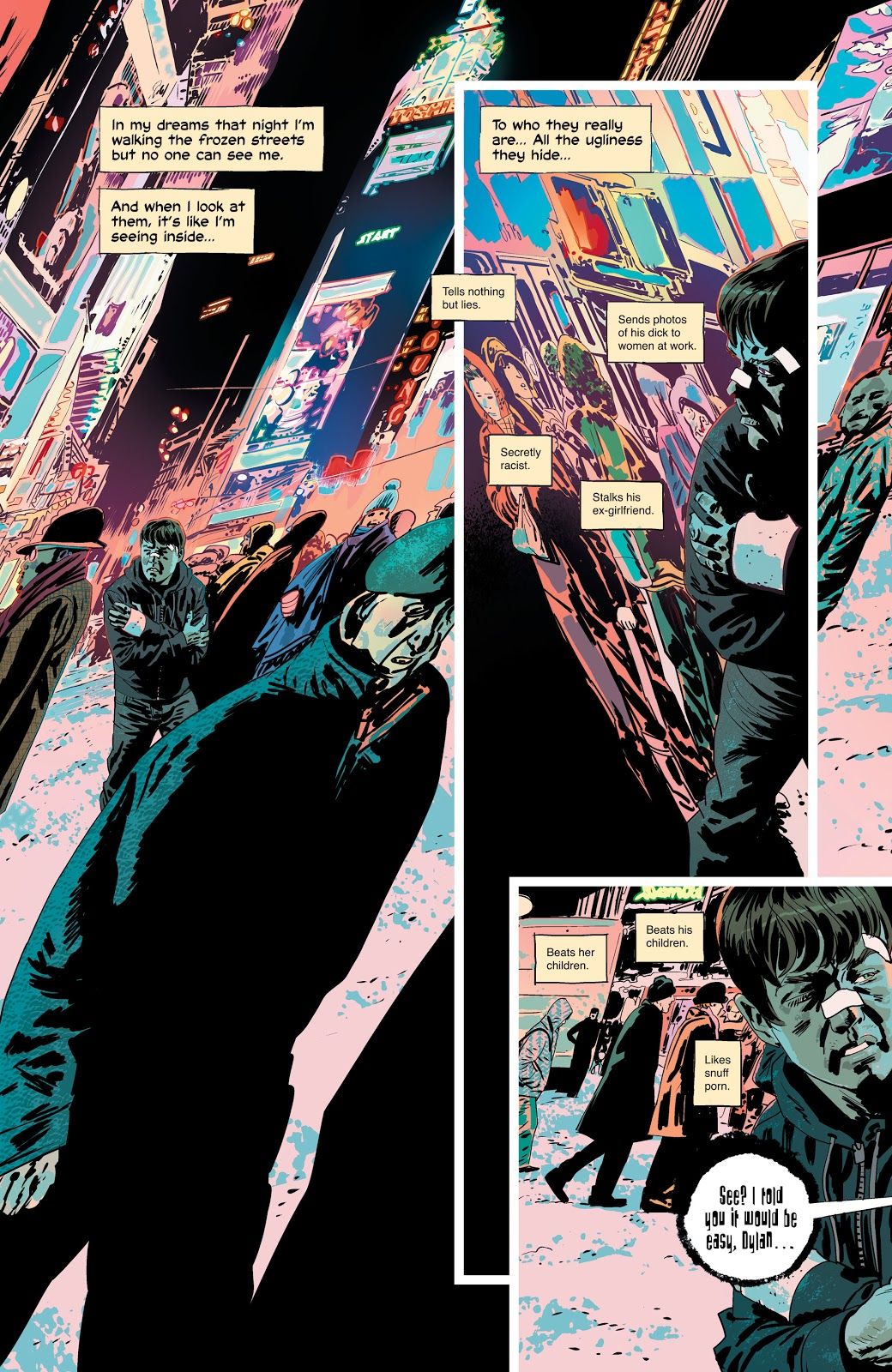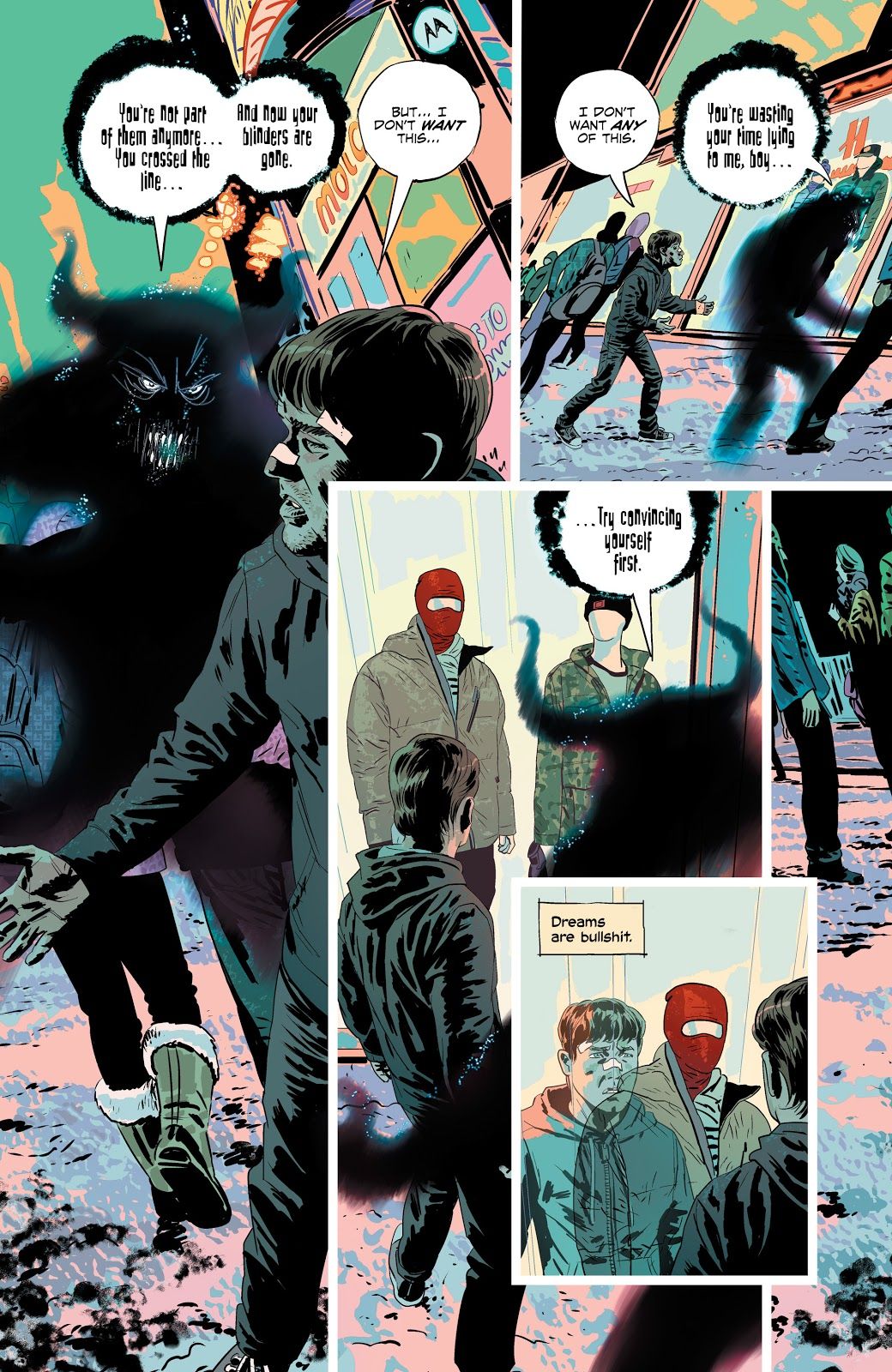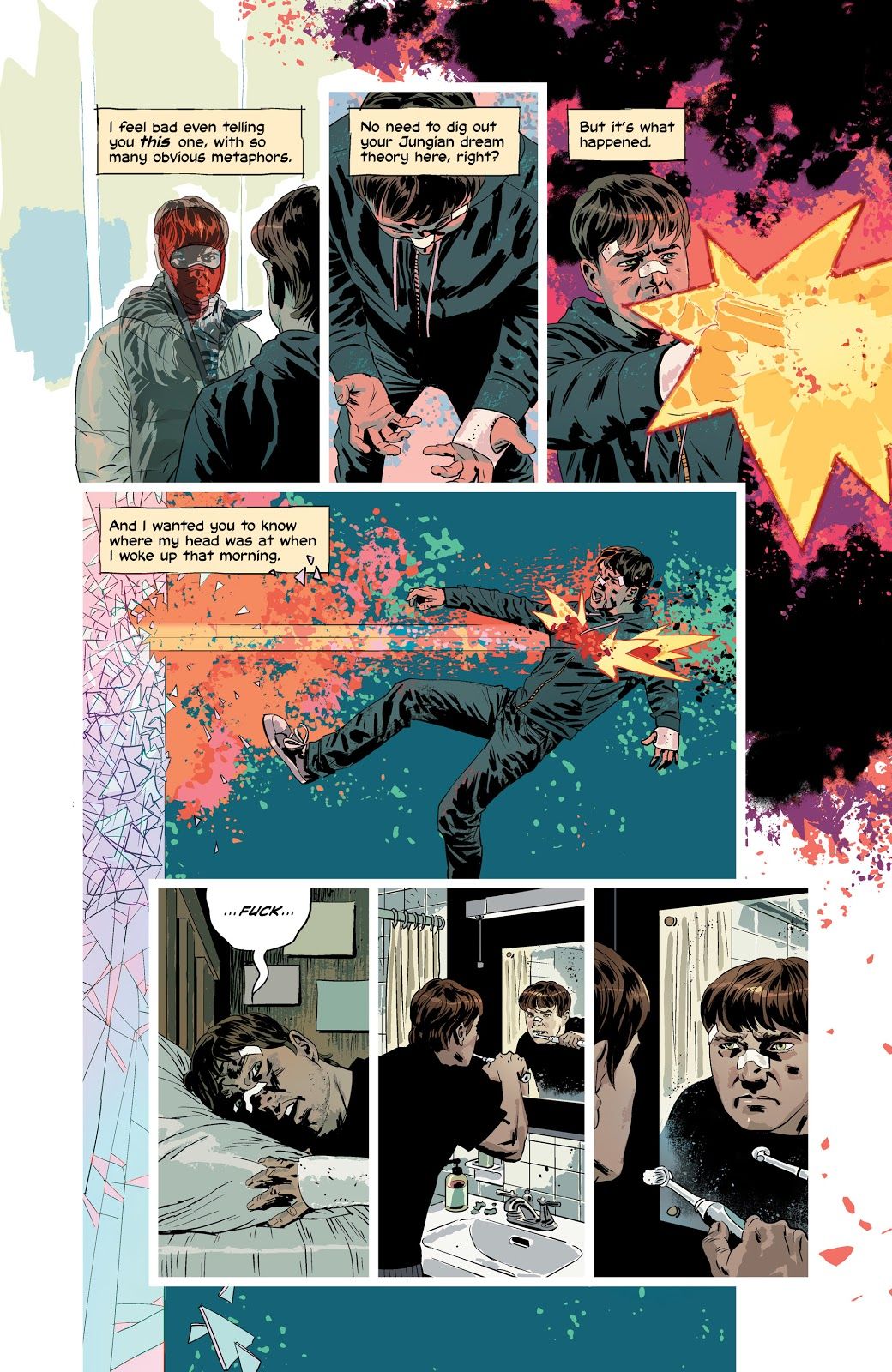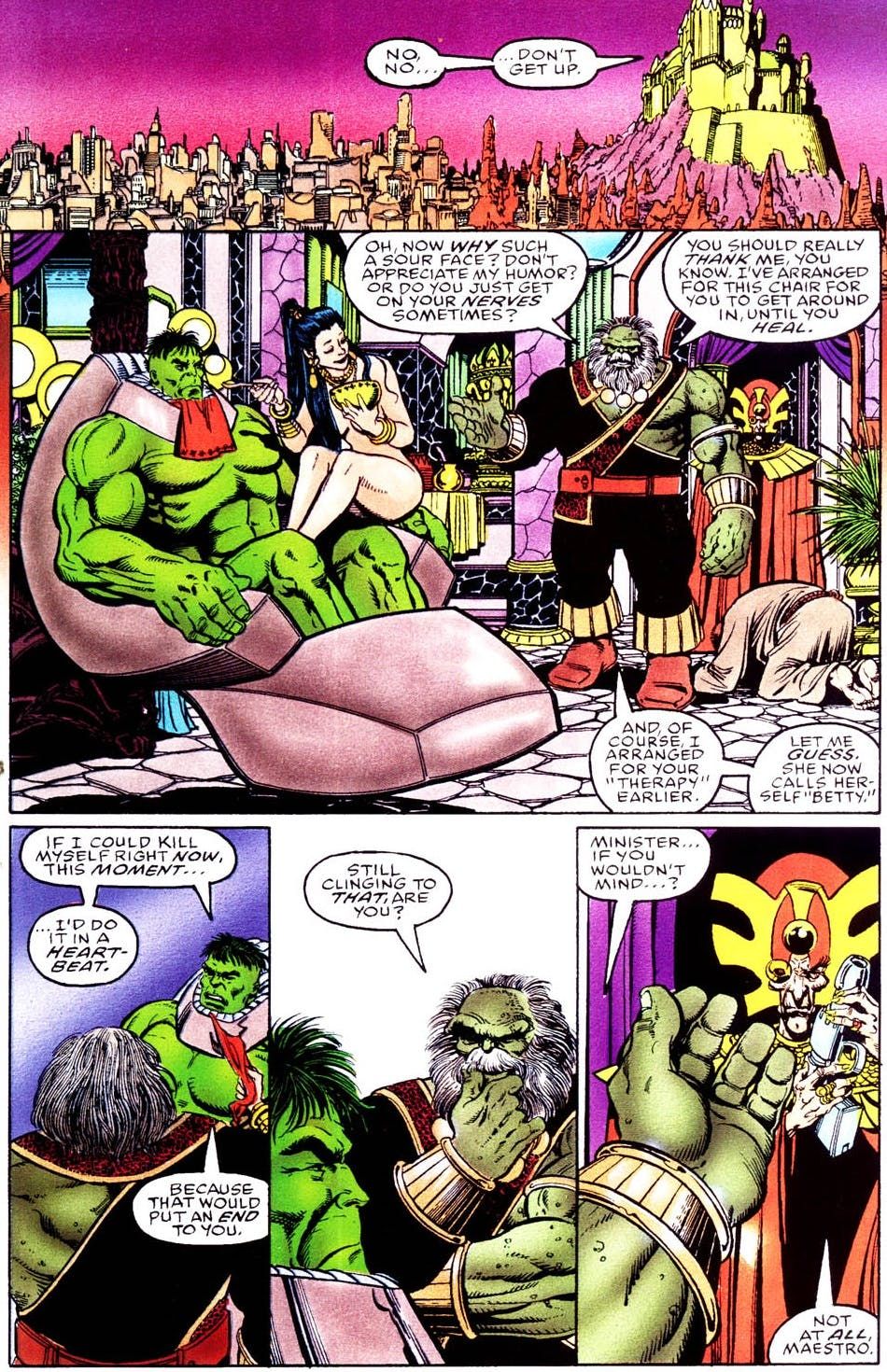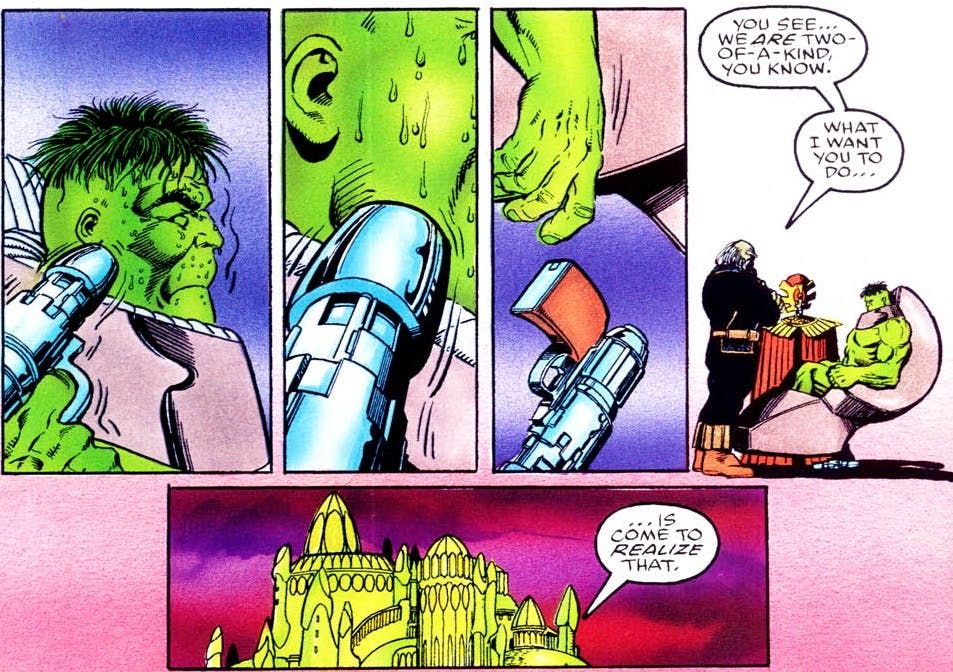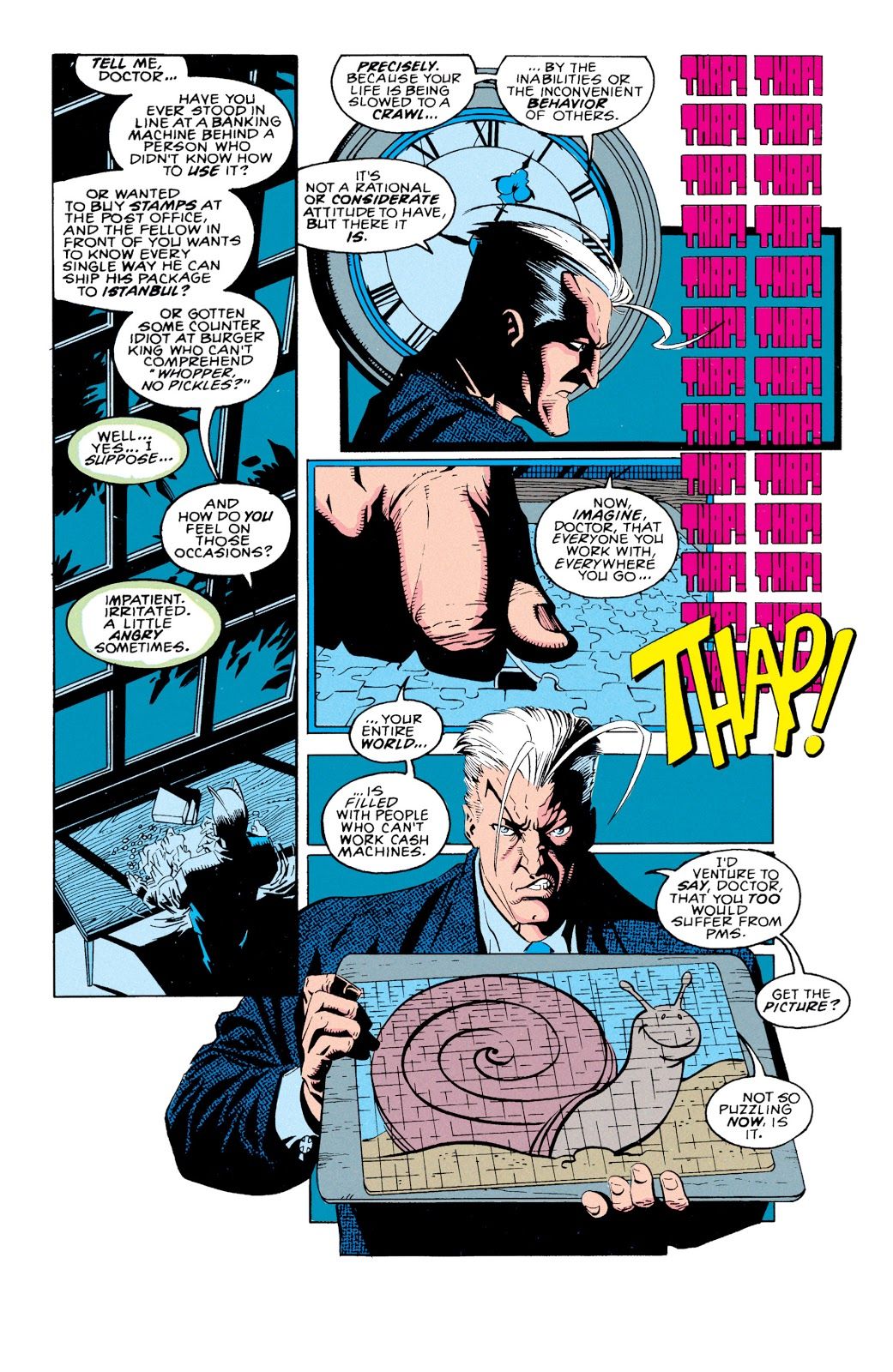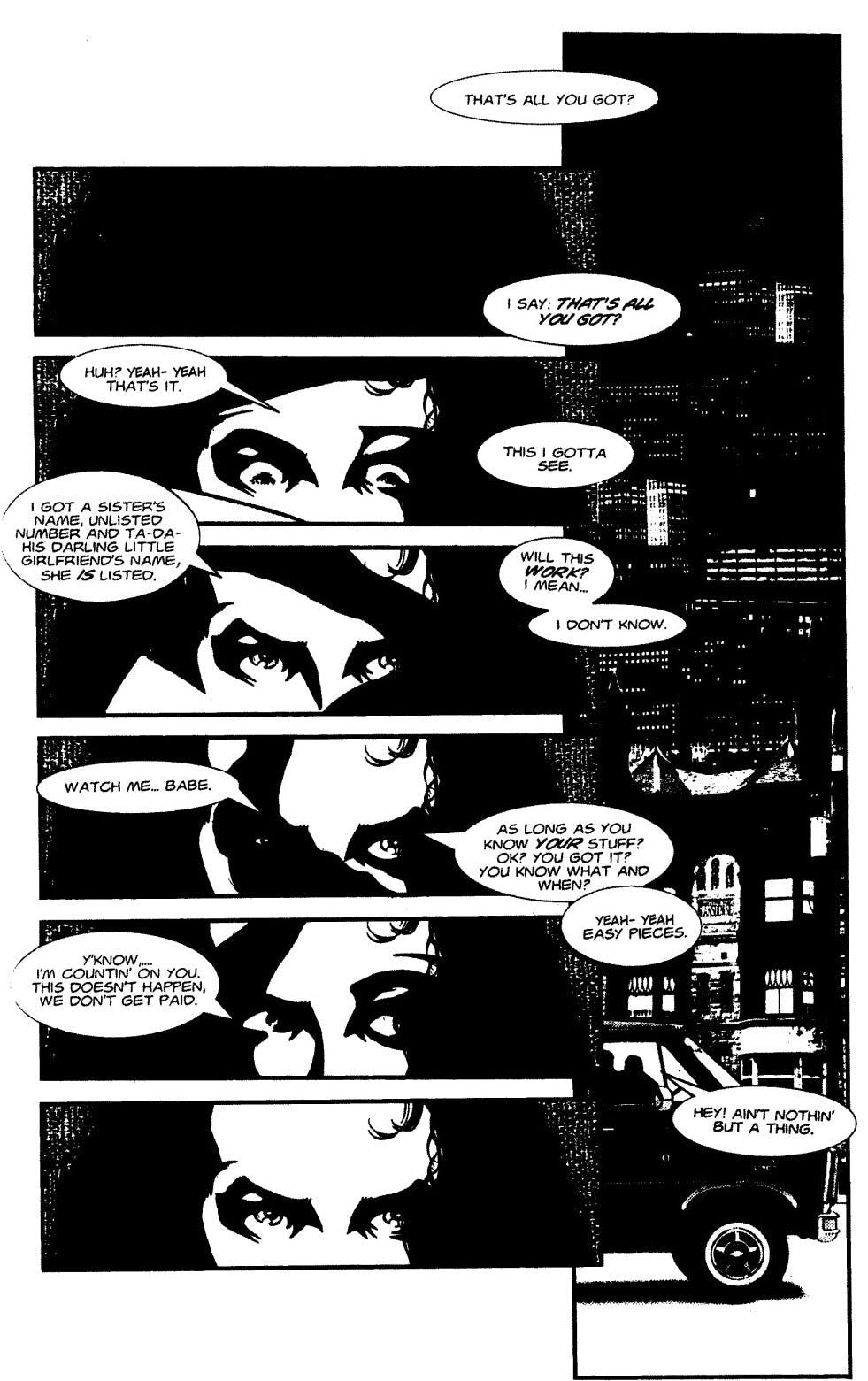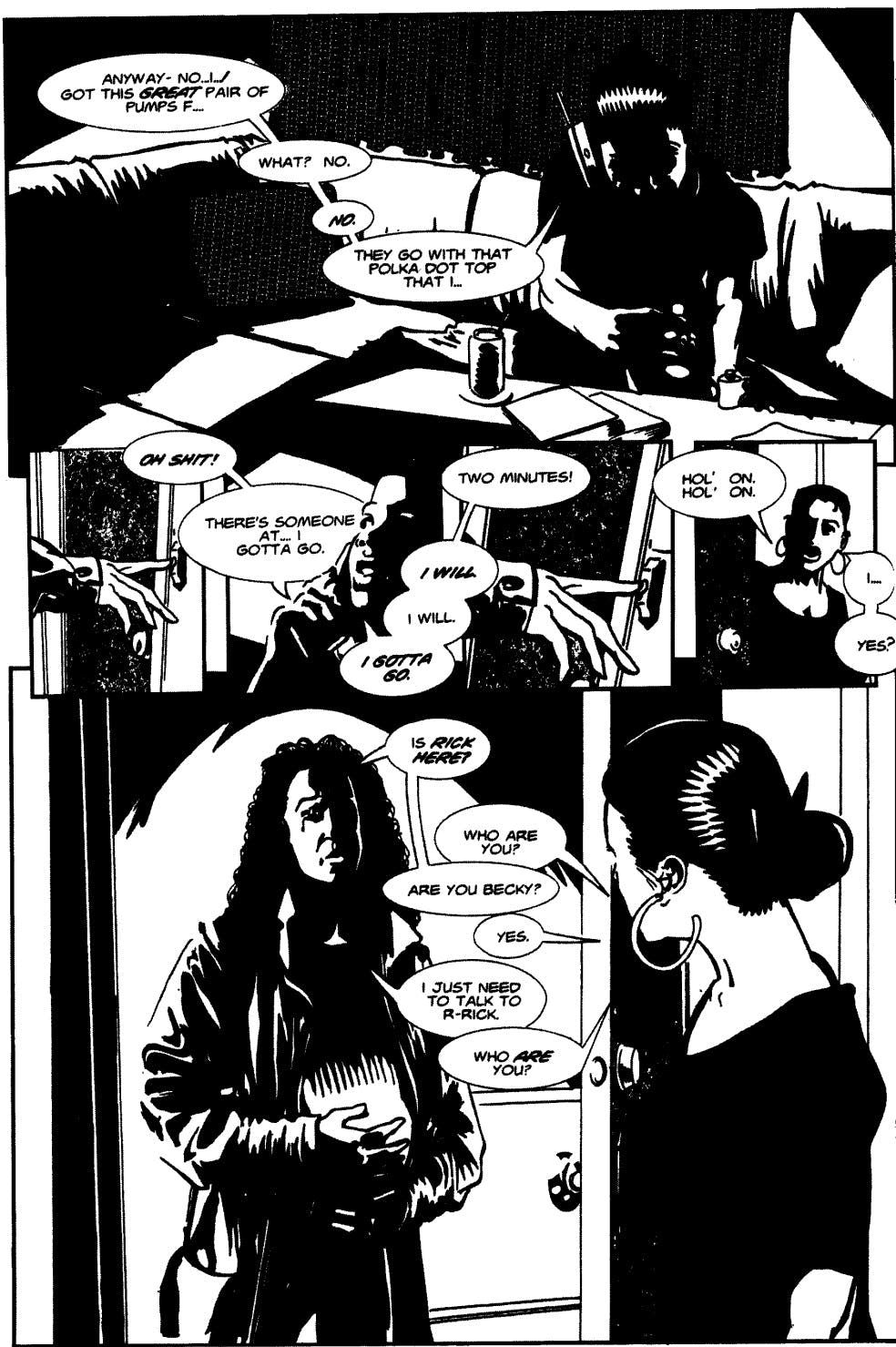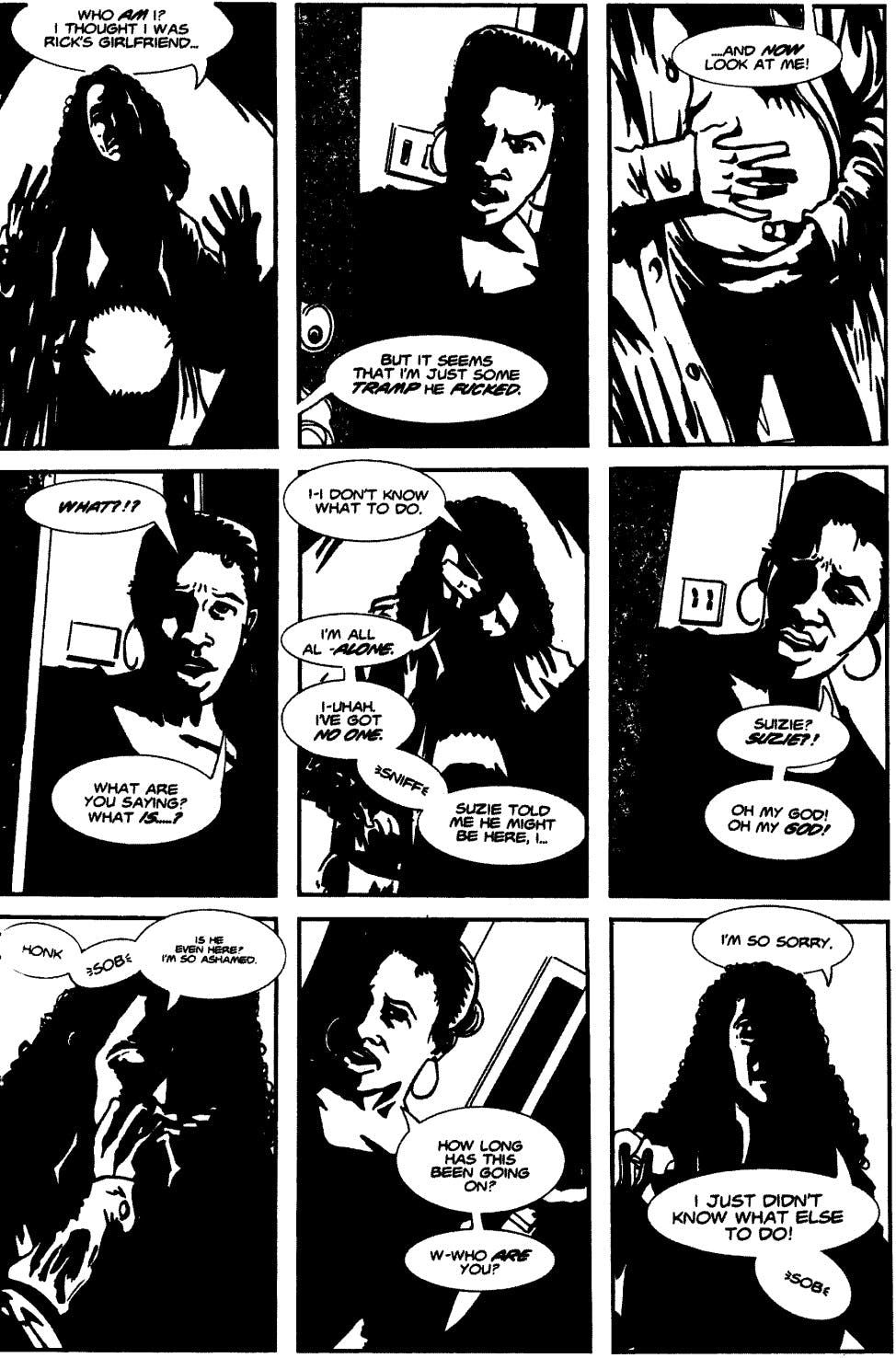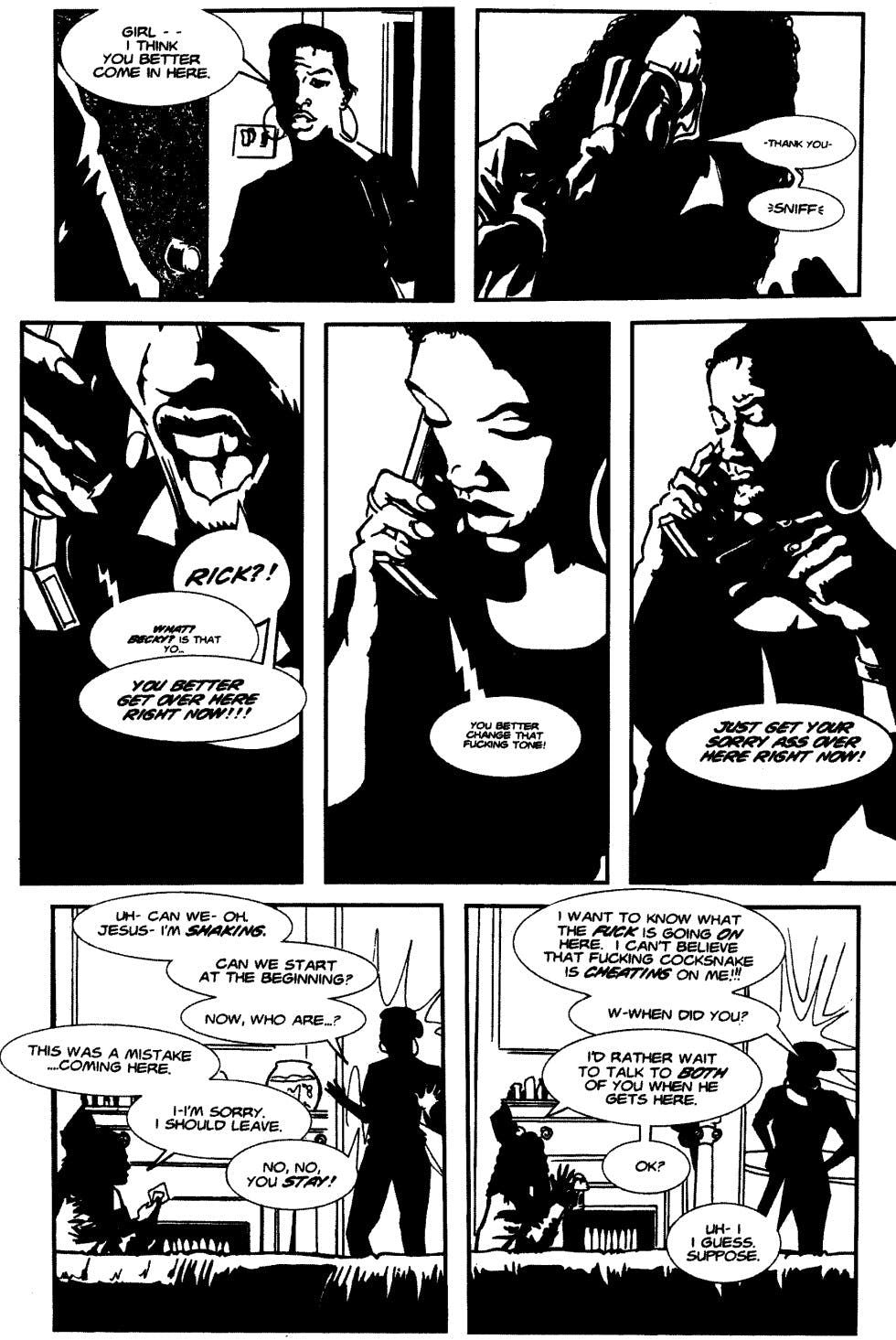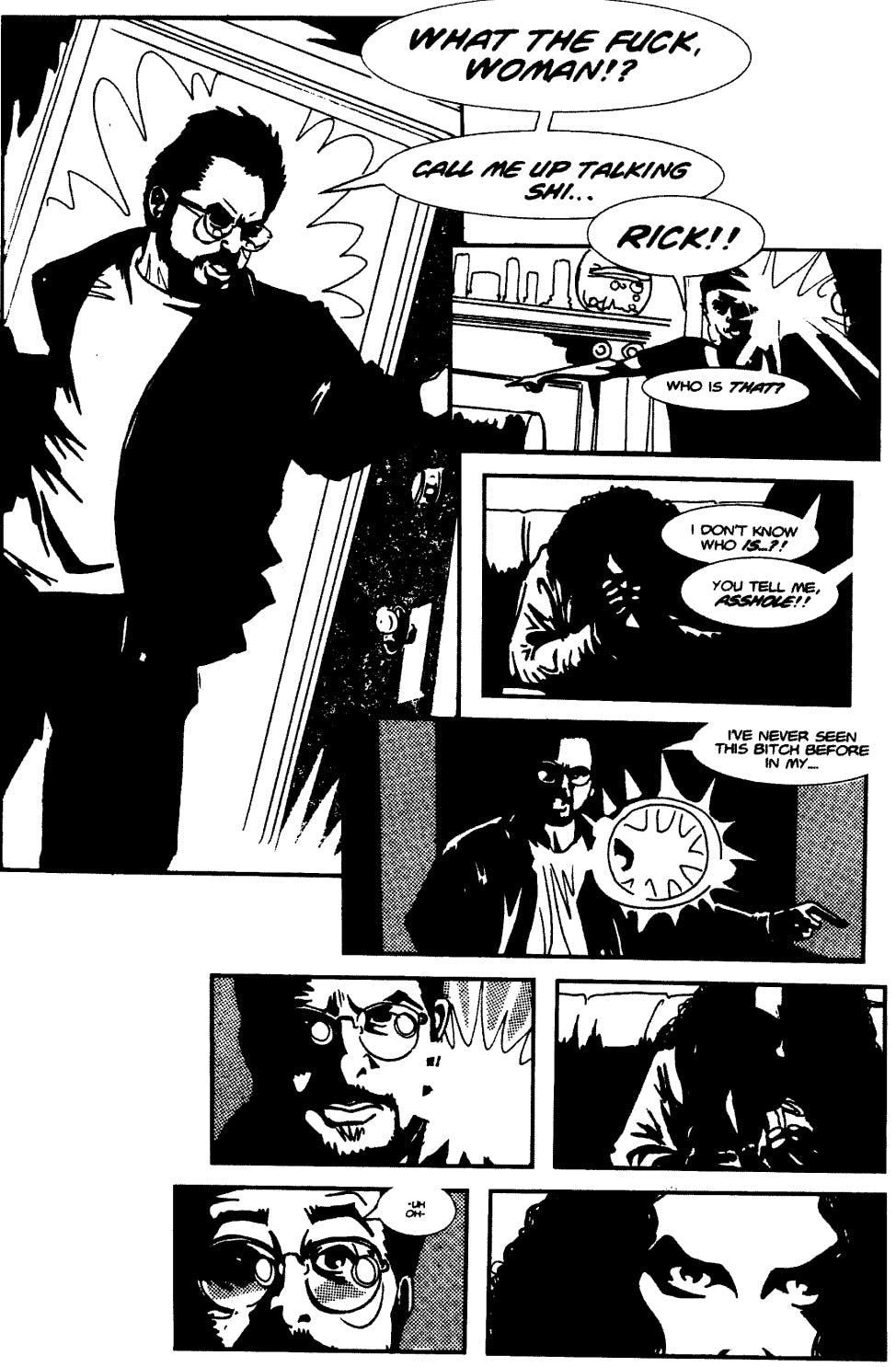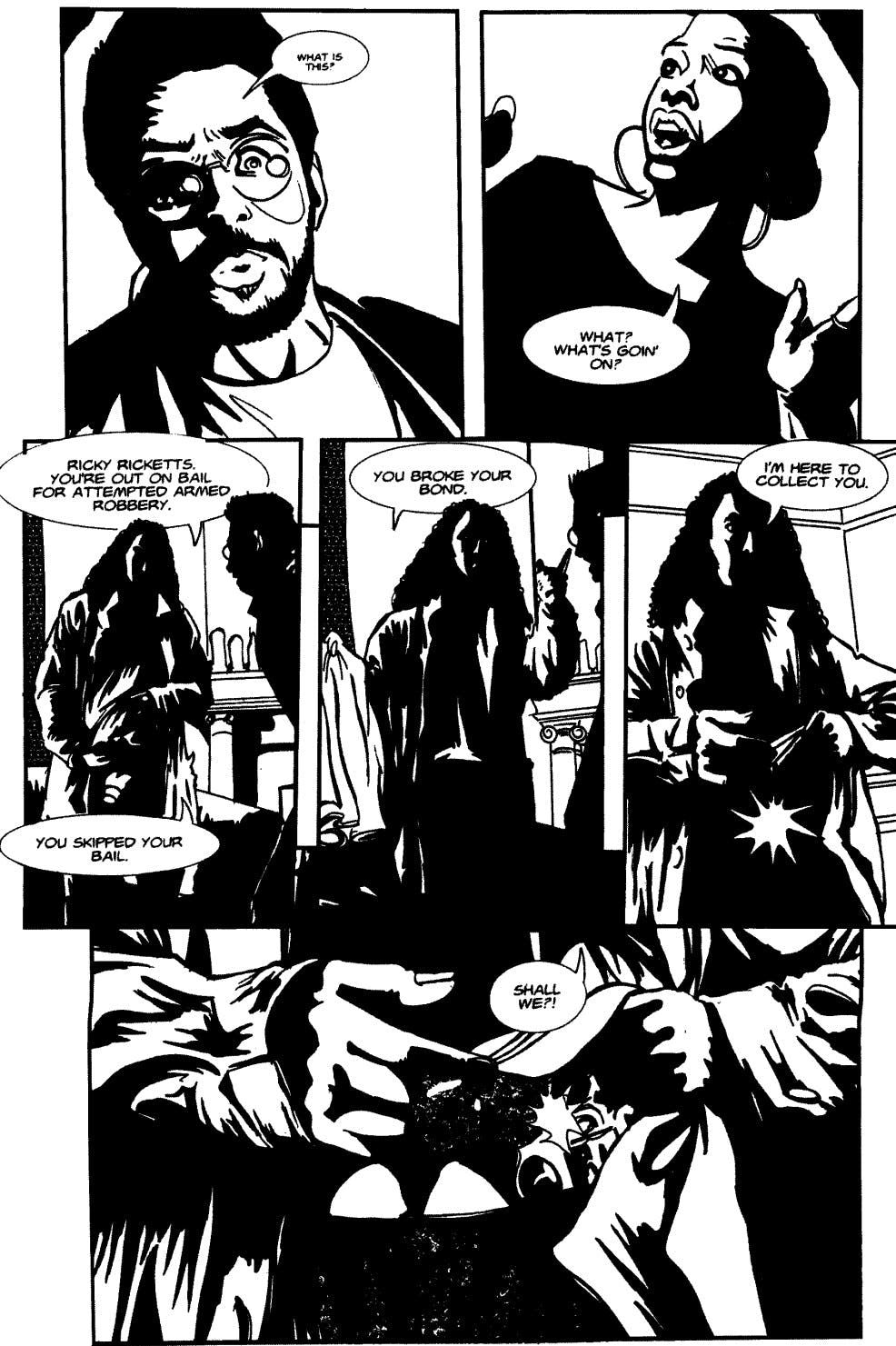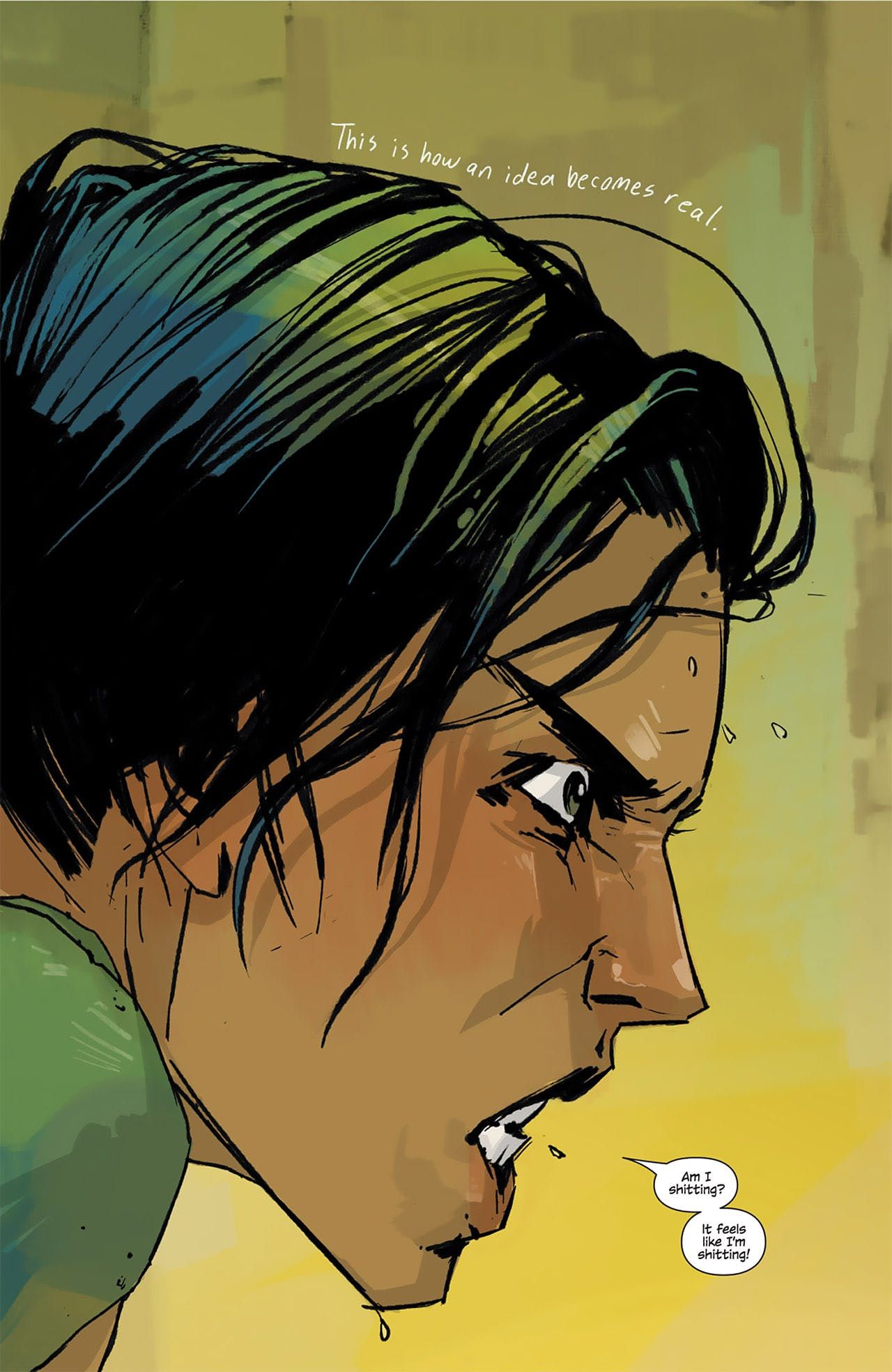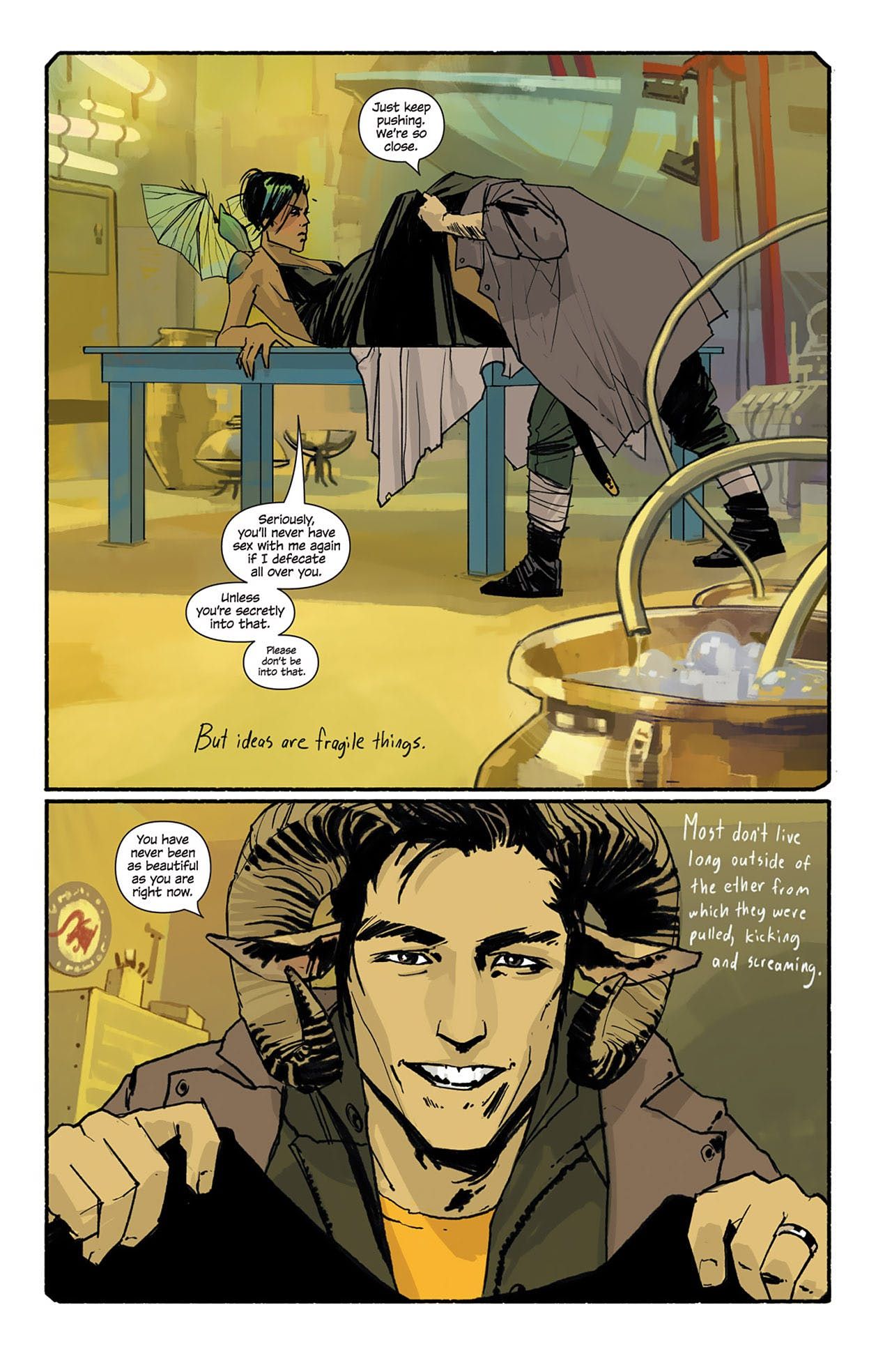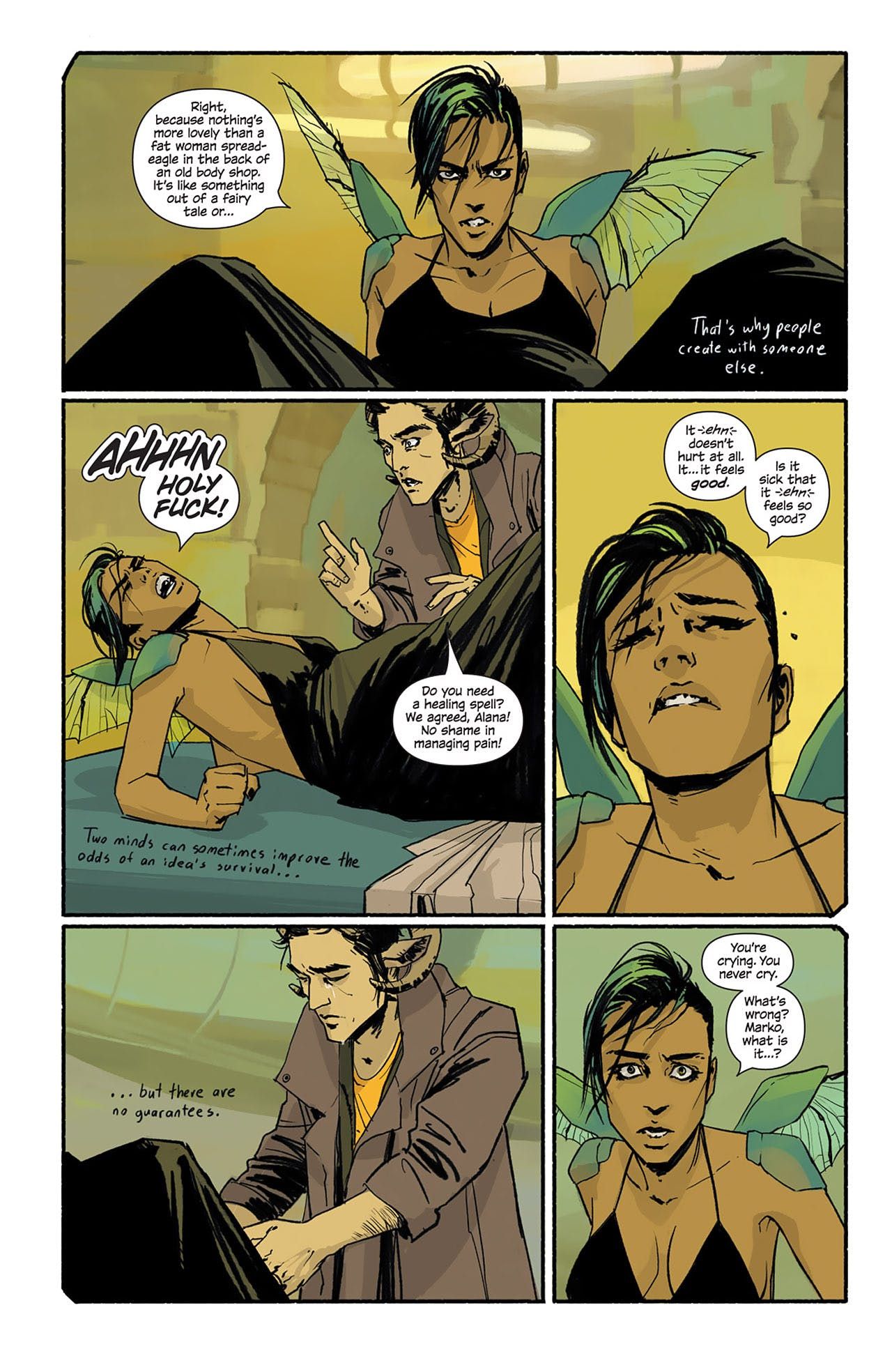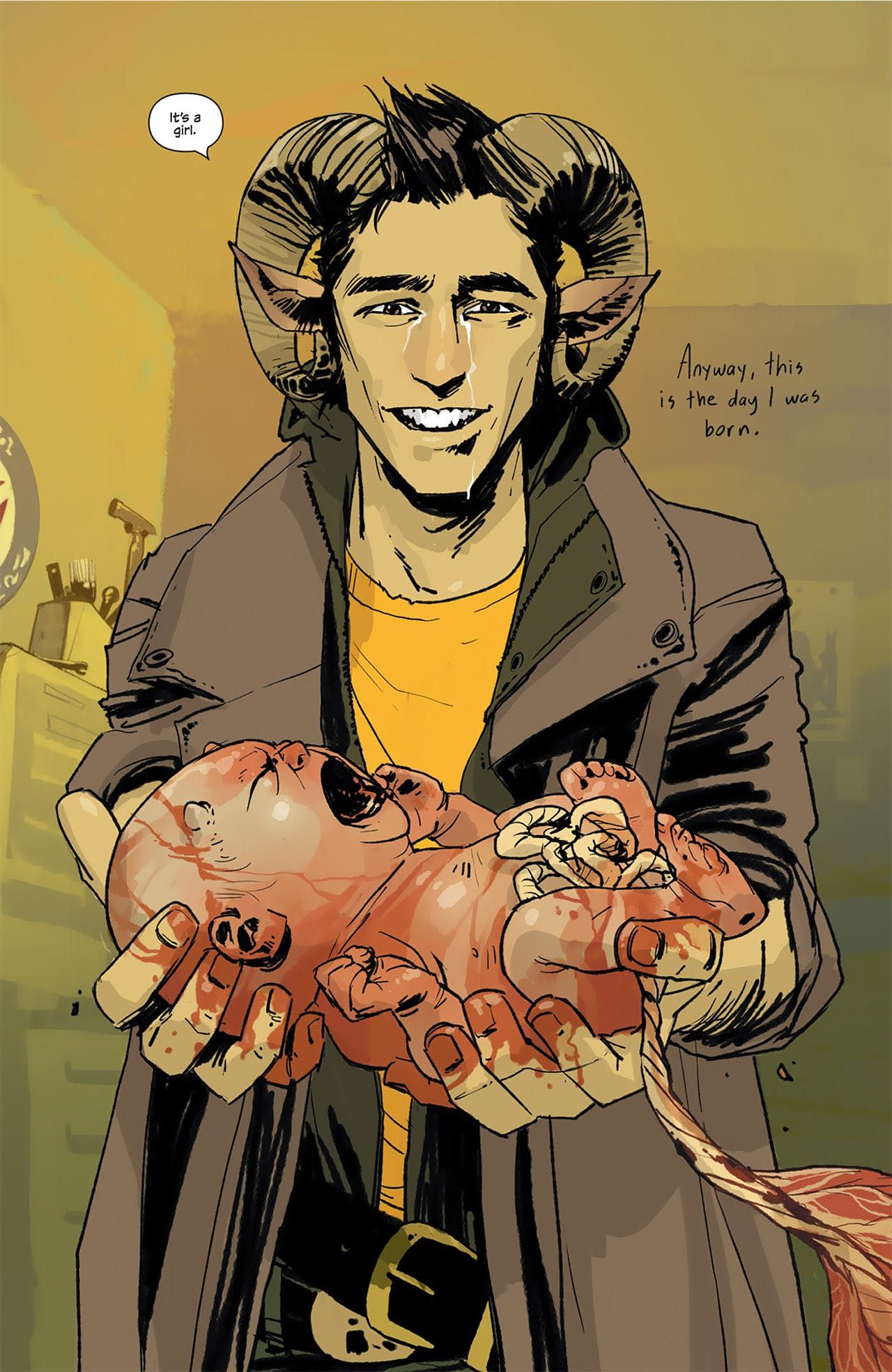The countdown continues with the next four writers that you voted as your favorites of all-time (out of roughly 1,023 ballots cast, with 10 points for first place votes, 9 points for second place votes, etc.).
14. Ed Brubaker – 914 points (8 first place votes)
Ed Brubaker's run on Captain America, where he brought Bucky back from the dead, is one of the top Captain America runs of all-time and it led to the hit film, Captain America: Winter Soldier. So Brubaker is excellent at the over-the-top action comic book stories. His Velvet series (with his Cap artist cohort, Steve Epting) also had a lot of action in it.
However, one of his keys to his greatness as a writer is that he can change speeds when he wants, and excel at both over-the-top action work as well as the slower, character-driven stuff (not that his Captain America run was not character-driven, as well, but any time that key plot points are a Cosmic Cube and a time travel gun, you know you're not exactly dealing with a fully grounded in reality comic book).
He has been working with the great Sean Phillips for nearly twenty years now, from Vertigo's Scene of the Crime to the great Sleeper for Wildstorm (about a sleeper agent inside of a super-criminal organization who finds himself stuck when his handler is shot and no one else knows that he is undercover), to Criminal and Incognito for Icon, to Fatale, Fade-Out and Kill or Be Killed for Image. Plus their recurring series of Reckless graphic novels (very much in the Criminal vein of stories).
Kill or Be Killed was about a young man who was visited by a demon (or perhaps he is insane) that forced him to kill. How will he react to this call to kill?...
That's been a consistent approach in his various series over the years, an ability to create compelling characters that we're willing to follow as he puts them through the wringer, always with a clever new approach to the same basic idea of "how will person X react if he/she is forced into situation Y?" I'm always eagerly awaiting the next person x and the next situation y.
Brubaker will be the head writer of the upcoming Batman: Caped Crusader animated series done by Bruce Timm.
13. Peter David – 988 points (12 first place votes)
Peter David is a perfect example of the folly of typecasting writers. David's first comic book storyline was the classic Spider-Man tale, The Death of Jean DeWolff. It was a dark story, and David was beginning to be typecast as "that dark comic book writer." Of course, though, fans of Peter David also know that he's one of the funniest comic book writers out there. It is almost as it people can have more than one side to their personality!
Throughout his career, David has managed to blend humor and pretty dark situations to tell compelling stories that manage to avoid to ever feel like they're dragging - this has allowed him to write some long runs on books, from his twelve-year Hulk run to his long runs on Aquaman, Spider-Man 2099 (two different volumes separated by two decades!) Supergirl, Young Justice and X-Factor (two stints, with the second one lasting much longer than the first one).
One of his most famous works was the Hulk miniseries, Future Imperfect (with the late, great George Perez), where the Hulk is kidnaped to the future where he is asked to take down the ruler of the world, the evil and powerful Maestro, who happens to be an older version of the Hulk. After the Maestro captures his younger self, there is an awesome sequence that helps show just how clever David can be...
Much of David's work spotlights his cleverness, from his unique take on Madrox the Multiple Man (each duplicate has his own personality) to his take on Supergirl (the alien Supergirl merged with a human to form some sort of angel-like being) to his idea to have the various Hulk personalities merge into one single personality with Banner in control - he is always thinking of very clever approaches to familiar comic books.
He also came up with the most clever explanation for why Quicksilver is a jerk ever...
Simply brilliant.
In an industry that is extremely hard on longtime writers, it's remarkable that David has been working pretty consistently for Marvel for the past TWO DECADES, more recently doing a series of miniseries.
12. Brian Michael Bendis – 1075 points (7 first place votes)
It is kind of funny, we're all so used to it now because he has become such a successful and omnipresent fixture in the world of comic books, but man, Brian Michael Bendis' dialogue REALLY stands out. It's his trademark, and it is really most likely the best thing about any given Bendis comic book. It is powerful, it is bold, it is practically poetic while it also naturalistic and believable. A particular approach Bendis does that I like a lot is when he uses the dialogue to both set up a scene and also to set up how outlandish it is, so it is a winking admission that the scene as shown is going to be kind of out there, but in a good way.
Here's an example from his excellent series Jinx, about a bounty hunter who falls in love with a con man. This is the introduction of Jinx in the series...
That's so Bendis and it is so compelling.
By the way, as an aside, years before there were as many strong female characters in comics as there are today (and obviously there could easily be even more), Bendis was big on cool female characters - Jinx, Jessica Jones, Deena Pilgrim, Ultimate Aunt May and Ultimate Mary Jane Watson are all very strong characters.
After cutting his teeth on creator-owned indie comics (that he drew himself), Bendis began to branch into mainstream work with a stint on Sam and Twitch for Todd McFarlane and then he used his distinct style on the Ultimate relaunch of Spider-Man. His superhero work was so popular that he was slowly brought into more superhero work. First Daredevil, which was a noir-ish book, so it perfectly fit Bendis' independent works and then the R-Rated Alias, which introduced the world to Jessica Jones (very much in the line of Bendis' Jinx series), but then as time went by, Bendis began doing more prominent superheroes works, first by launching the best-selling New Avengers revamp of the Avengers , which he stuck with for nearly a decade and then writing Uncanny X-Men and X-Men before taking over Iron Man, introducing RiRi Williams, the new hero known as Ironheart.
Bendis then went to DC, where he had long stints on both Superman and Action Comics (where he had Superman reveal his secret identity to the world) and Justice League. Recently, he's been doing creator-owned series for Dark Horse Comics, as well as launching a Substack.
11. Brian K. Vaughan – 1084 points (11 first place votes)
Brian K. Vaughan has had a particularly unusual career. Unlike most famous comic book writers, he's never had an extended run on a major pre-existing title. He's done an arc on Batman and some fill-ins for Wolverine very early in his career, but Vaughan's first major work was a new ongoing series for Vertigo starring Tefe Holland, the daughter of Swamp Thing. It didn't do that well, so no one was quite expecting him to suddenly practically save Vertigo in their post-Sandman, post-Preacher state.
The concept of 2002's Y the Last Man was simple - one day, all the men on Earth die. All the men, that is, except young amateur escape artist Yorick Brown and his monkey, Ampersand. They're the only two males alive on the entire planet, and, as you might imagine, hilarity ensues.
Seriously, though, Yorick (who is freaking out because he JUST proposed to his girlfriend, Beth, over the phone when the plague hit, and she's all the way in Australia!!) is tasked to first travel to find Dr. Allison Mann, a geneticist who needs to study Yorick to discover what happened and if they could reverse it. Along with Yorick on his journey is this government agent, Agent 355, who serves as Yorick's bodyguard. Once they find Dr. Mann, the four (counting Ampersand) travel the country and the world in their mission to save the planet from dying out.
The relationship between these four characters (mainly the three human ones) forms the main focus of the series. So I'll show you a few sample pages to get the dynamic they shared on their trip across the United States. Along the way, they (and we, the reader) find out how the world has been coping with the loss of all the world's men. It's fascinating and touching stuff.
Right after Y the Last Man launched (and before it became TOO much of a sensation), Marvel brought him in for the launch of a short-lived line of comics called Tsunami. Titles included a Human Torch comic as well as two comics by Vaughan. One was a Mystique ongoing series that lasted a year. The other one was a series with artist Adrian Alphona called Runaways.
The concept of Runaways was a clever one - a group of teens (and one pre-teen) meet each other every year when their parents have some sort of meeting. When they decide to snoop around, they discover the unthinkable - their parents are supervillains!!! With this knowledge in mind, the kids decide to (wait for it..) run away, each taking something with them from their parents, whether it be Nico Minoru (Sister Grimm)'s magical powers, Karolina Dean (Lucy in the Sky)'s alien abilities, Gertrude Yorkes (Arsenic)'s pet dinosaur, Chase Stein (Talkback)'s gadgets, Molly Hayes (Bruiser/Princess Powerful)'s mutant strength or Alex Wilder's cunning and tactical abilities.
On the run, they try to both foil their parents' schemes while also trying to do some good.
While working on Y the Last Man, Vaughan then launched ANOTHER new series, this time it was called Ex Machina and it was Vaughan's take on what a superhero in the real world would appear like, as well as what would happen if a former superhero became Mayor of New York. In doing so, Vaughan gets to make points about superheroes AND politics (as opposed to politics and poker) while being ably assisted by Tony Harris' realistic artwork.
Mitchell Hundred was a civil engineer who gained superpowers by a mysterious seemingly alien object. He now has the ability to communicate with mechanical devices. He became the world's first superhero but after a short career he retired and ran for Mayor as an independent. His candidacy was going nowhere until he came out of retirement to save one of the Twin Towers during 9/11. Now a world famous celebrity, he is easily elected Mayor of New York.
The series follows his term in office, although there are tons of flashbacks. Vaughan expertly uses time jumping to inform his stories. The cast of the book is a fascinating one, from Deputy Mayor Wylie to Hundred's two closest friends, Bradbury - his head of security and Kremlin - a family friend of Hundred's since childhood that helped him become a superhero in the first place who is none too thrilled at Hundred giving up superheroics to be a politician. That is just a sampling of the many cool characters who make up Hundred's staff.
Most recently, after taking a break from comics, Vaughan launched the hit comic series Saga and Paper Girls for Image. Saga (which recently returned from a long hiatus that Vaughan and his artist collaborator, Fiona Staples, took) is about (almost literally) star-crossed lovers who run off together and have a kid, contrary to what all of their family and all of their people want from them.
Paper Girls (done with Vaughan's partner on the series, artist Cliff Chiang) was about four newspaper delivery girls who get caught up in a time-traveling mystery. It was recently adapted into an Amazon Prime TV series.
There have been so many twists and turns in Saga that I always like to only share the early stuff from the series in samples. Here is the very opening of the series, which beautifully captures what to expect from the style of the story being told here...
If Brian K. Vaughan is writing a book, you know the odds are very good that the book will be one of the best books on the market.

